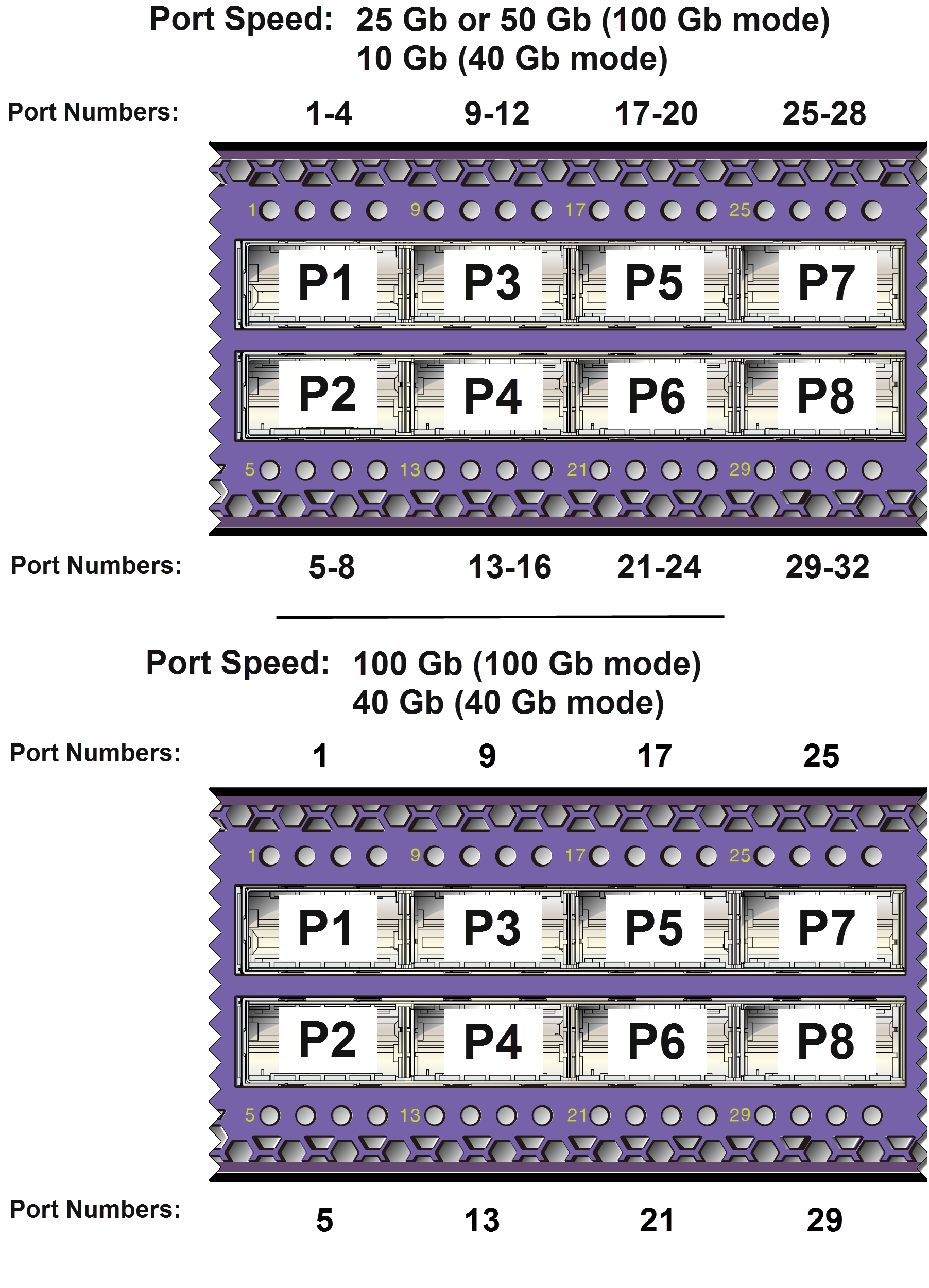The X870 series switch is a 100 Gb switch suited for large datacenter applications. Front-panel Ethernet ports can provide 100-gigabit Ethernet connectivity using installable QSFP28 and QSFP+ optical modules. The ports can operate in 40- or 100-gigabit mode and can be partitioned into 10-, 25-, and 50-gigabit data lanes. (See Partitioning X870 Switch Ports into Data Lanes for details and an example.)
The X870 provides latency less than 600 nanoseconds and supports cut-through switching to help optimize high frequency trading applications as well as latency sensitive cluster computing.
Native stacking with other X870 series switches is supported using the front panel-ports.
X870 series switches require ExtremeXOS version 22.2.1 or later.
Front-panel ports on X870 series switches can be configured for either 100-gigabit or 40-gigabit mode, and each port can be partitioned into data lanes through the use of split cables. This yields a total of up to 128 ports.

In 40-gigabit mode, each port can be partitioned into four 10-gigabit data lanes.
In 100-gigabit mode, each port can be partitioned into two 50-gigabit data lanes or four 25-gigabit data lanes.
A serial console port on the front panel of the X870 series switch allows you to connect a terminal and perform local management. An Ethernet management port can be used to connect the system to a parallel management network for administration. Alternatively, you can use an Ethernet cable to connect this port directly to a laptop to view and locally manage the switch configuration. The Ethernet management port supports 10/100/1000 Mbps speeds.
There is also a USB console port. If the USB console port is connected, it will be selected over the RJ45 console port.
Each base model is available with either front-to-back or back-to-front cooling. There is no operational difference between these switch versions.
Switch cooling is provided by six hot-swappable fan modules providing N+1 redundancy. Fan modules are available in two different models that direct the airflow either from front to back or from back to front. All six installed fan modules must be of the same model, so that they all direct the airflow in the same direction.

Note
Ensure that all fan module slots are filled when the switch is powered on. Fan modules can be hot-swapped after power has been turned on.
Note
Air must flow in the same direction for all installed fan modules and power supplies in a switch.
Note
See the ExtremeXOS 22.6 User Guide and the ExtremeXOS 22.6 Command Reference Guide for feature-specific information about the switches and for information regarding switch configuration.
 Print
this page
Print
this page Email this topic
Email this topic Feedback
Feedback